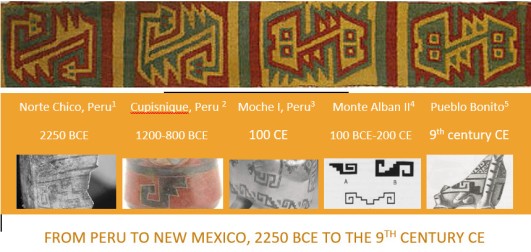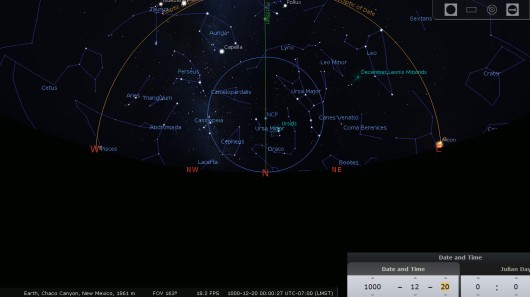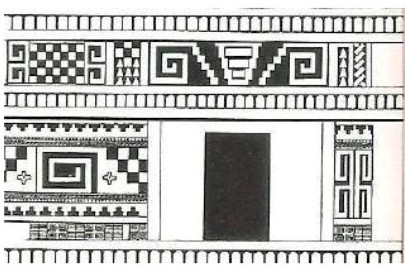It could be essential to our work and we do not want to lose it, it carries a CC Creative Commons License so we made a copy to share.
Ms. Devereaux’s blog can be found here:
- https://thetinkuy.wordpress.com/celestial-house-of-the-north/
Celestial House of the North


Casa Rinconada, Chaco Canyon. Construction of Casa Rinconada was begun in 1070 CE to observe the Big Dipper and likely the position of the rainbow Corn maiden, Alkaid, during the winter solstice.

The winter solstice was considered to be the middle of time and the beginning of a new agricultural cycle as the sun reached its southernmost position in the southeast. After a “rest,” and stimulated to move by the winter solstice ceremony, it began its journey along the eastern horizon toward its northernmost position in the northeast on the summer solstice. On the winter solstice the Twins asterism is at the zenith of the sky. In relation to the CNP the Milky Way is in its “stand up” position in the wets. The orange line represents the ecliptic.
The celestial House of the North at the polestar has been shown to be very important in ancestral Puebloan mythology and cosmology as the northern “House” of the axis mundi. As documented by the Zuni’s Galaxy altar (Stevenson, 1904:pl. CIV) and origin story (Cushing, 1896) the celestial House of the North was occupied by the “Great God,” the Plumed Serpent called Four Winds. The seven stars of the Big Dipper represented the seven color-coded Corn maidens, and the light of the seven stars reflected on water on earth represented their sisters the Flute (Dew) maidens. Alkaid, the star at the tip of the ladle of the Big Dipper, was the star of the rainbow Corn maiden and represented the seventh direction or the maiden that “led all the rest.” Evidence that Chacoans shared the same interest in Alkaid is seen in the orientation of Casa Rinconada to the polestar and the orientation of a tri-wall masonry tower at Aztec ruin to Alkaid. Other evidence suggested that observation of Alkaid in Chaco Canyon as it passed the meridian would have been an accurate way to determine the exact length of the year. The position of Alkaid in the succession of the solstices and equinoxes during the year also defined the perimeter of the region of space called the “glory hole” and “Six Sky” by the Maya and would also have been a close estimate of both the season and the length of the year. At the summer solstice, Alkaid is as close as it will get to the zenith of the sky, while at the winter solstice it appears to brush the earth’s horizon in the north on the meridian just after sunset.

Just after sunset on the spring equinox, Venus (the avatar of the Plumed Serpent called Four Winds), Aldebaran (star avatar of the culture hero Poshaiyanne of medicine and rites, the bright star above Saturn in Taurus), and the Pleiades (the “seed” stars just below Venus in Taurus), all very important in ancestral Puebloan cosmology, are tightly grouped in the west above the sun.
In that light these images visually explore the seasonal astronomy of the celestial House of the North seeking clues as to how this important place may have been represented on pottery by symbols such as the swastika and the kan-k’in cosmogram. Traditionally the interior of a pottery vessel represented the sky dome, and therefore the symbolic content displayed at the center of the sky dome on the bottom of the bowl should correspond to the celestial House of the North that was also called Heart of Sky if in fact this cosmology documented ethnographically for the Zuni, Hopi, and Keres was shared by the occupants of Pueblo Bonito.
Left: Pueblo Bonito, A336196, Smithsonian Anthropology Digital Collection. There are a number of versions of this same pattern in the Smithsonian’s digital database and it remained part of the visual program of several groups in the post-Chacoan dispersion. The pattern has both dextral and sinestral versions, which suggests that something changes, as in the movement of the Milky Way as it flips from a position above the ecliptic to a position below the ecliptic at the solstices (Fig. 2).

Left: Pueblo Bonito cosmogram c. 1000 CE. Displayed are a quartered bowl with two black bicephalic serpent scrolls, two “charged” interlocked connectors (serpent scrolls: see Connections), and four tau-shaped symbols at the intercardinal directions that in Maya art are diagnostic for the sun god (Schele, 1976). Notice the N-S and E-W orientation of the connectors. Image courtesy of Smithsonian’s Anthropology Digital Collection #A336324, available online.
Out of 95 bowls collected by George Pepper (1909, 1920) and Neil Judd (1954) from Pueblo Bonito (rm. 33-12; rm. 266-22; rm. 326-61), 17 bowls displayed a swastika, 6 displayed a checkerboard (sky), and one displayed a swastika pattern in the context of the checkerboard sky (rm. 326, Judd, 1954:pl. 54z), which supports the contention that the interior of the bowl did represent the sky and the swastika was a central celestial feature. Room 33, the northern burial crypt, did not have bowls that displayed the checkerboard or the swastika, while there was a single mortuary bowl in room 32 that prominently displayed the kan-k’in cosmogram. Room 266 was a storage room for ceremonial pottery where six of the bowls with the swastika were found (6/22= 27%), while room 326 was one of the four rooms of the western burial crypt where 5 bowls with the swastika and six bowls with the checkerboard were found (11/61=18%). Taken together the swastika in the Milky Way checkerboard sky accounted for 24% (23/95=24%) of the designs on ceremonial and mortuary pottery, which suggests that the swastika did represent the celestial House of the North by the rotation of the Big Dipper.
This work is under a Creative Commons Attribution-Noncommercial-NoDerivatives 3.0 Unported license . Suggested citation for text: Devereaux, M.K., 2018. Twisted Gourd, The Symbolic Language of the Precolumbian Rainmakers, http://www.thetinkuy.wordpress.com.
More articles by Kathryn Devereaux PhD.
- Part III. The Maya Connection: Details of the Relationship Between the Twisted Gourd, Sacred Directions (axis mundi), and Empowered Rule
- Part VI. Ancestral Puebloan (Anasazi) Cosmology: An Ideology of Leadership Based in the Rainbow of Sacred Directions
the following article contains an index:







Comments
Reblogged this on Born to Love.
https://en.wikipedia.org/wiki/Liubo